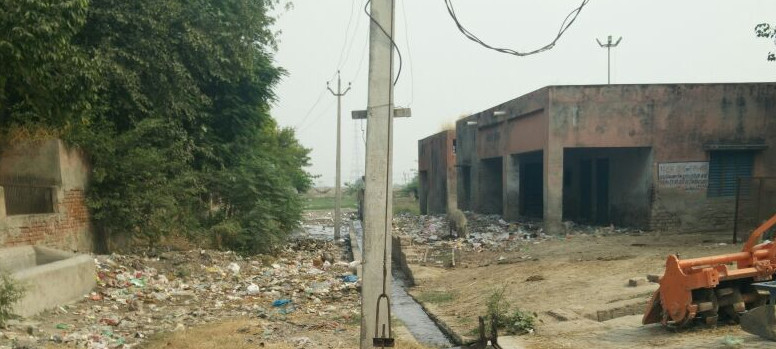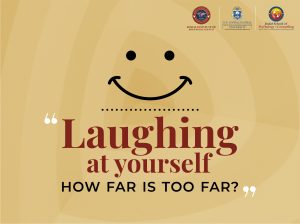
-By Deepanshu Mohan, Professor, Jindal School of International Affairs & Shivkrit Rai, Student, Jindal Global Law School

“Somewhat bizarrely, the issue of learning is not very prominently positioned in international declarations…the implicit assumption, presumably, was that learning would follow from enrolment. But, unfortunately, things aren’t that simple…” ∼ Poor Economics (2011) by Abhijit Bannerjee and Esther Duflo
Sonipat, Haryana: Those examining the implementation of social policies across Indian states continue to be amazed by the perpetual exacerbation of a hope vs reality conundrum. The state of primary education is a case in point here. From the government’s perspective, when it comes to access to education, we usually witness a standard, patterned response on any investigative inquiry raising questions – it looks at the studies done, pick holes in the analysis conducted and deflects on issues concerning monitoring, outcome-based teaching and learning standards.
The focus here is on presenting some caveats from field-based observations on the implementation of Right to Education (RTE), gathered from regular visits made to three randomly-selected primary government schools in Haryana (mainly around Sonipat district). A more detailed investigation took place at the Government Middle School at Chhatera Bahadurpur and the Government High School at Jatheri, both in Sonipat,
Hope
The Right to Free and Compulsory Education Act, 2009 was initiated to mandate access to free, compulsory education to all children aged between 6-14 years. With the implementation of RTE, the government has aimed to increase the enrolment of students across states in government-aided schools (including private schools) and thereby create equal access to free, high-quality primary education for those in need. Other objectives of the 2009 Act include reducing any discriminatory gap between economically weaker sections, promoting universal retention of education and bridging the gender gap.
The RTE act focuses on inputs – ensuring a basic infrastructure, hiring qualified teachers and compensating them appropriately, standardising textbooks, providing uniforms and maintaining a teacher-student ratio (30:1) for adequate learning outcomes.

Reality
On the ground, the implementation of RTE norms looks different from the ideals of the Act on various fronts.
Basic infrastructure and other amenities: The classrooms constructed (specially for students below class five) are not sufficient for the total number of students enrolled (on average around 120-150 students were enrolled below class five in the government primary schools covered).
The washrooms in all schools were found in unhygienic conditions and the school buildings remain largely surrounded by waste and dump, during the visits made.
Basic amenities (promised under RTE norms) like school uniforms, stationery and books were not sufficiently provided to students. For example, based on responses collected from class six and seven students, students on average were found to be provided with two uniforms and three pencils for an entire academic year. (A sample of 12-15 students from each school were asked questions regarding basic amenities, and sampled responses reflect the collective view of most students enrolled in these grades.)
The books were usually delivered late, which meant students had to incur out-of-pocket expenditure to purchase books to and prepare for their exams. This created dissatisfaction amongst students and parents, resulting in a higher absentee record.
Mandatory promotion policy: One of the biggest loopholes in the RTE Act is related to automatic promotion of students from one class to another. There is no formal examination which students need to clear between grades. This distorts the whole idea of assessing learning outcomes.
In the Government Middle School at Chhatera, it was observed that during most times of the day, classes for third, fourth and fifth grade students were merged together as one class, and included the teaching of the same curriculum.
Most teachers were found not to be answerable to any authorities, and cited mandatory class promotion policy and the zero “fail rate” as reasons for poor learning outcomes. This practice, according to the teachers present, creates a low quality standard for knowledge delivery systems, forming an unclear foundational base for students progressing to higher classes.
Lack and non-availability of teachers: According to the Act, if a school does not have a teacher for a compulsory course, it is the responsibility of government school management to provide a replacement teacher within certain time and use government funds for this (this includes private, government-aided schools too).
In our visits, we observed that there was a shortage of at least three full-time teachers for core courses. In one school (Government High School, Jatheri), while there was a computer lab with computers, the school did not have a computer teacher for more than a year, depriving students of a subject which is critical for building basic skills. Similarly, in one of the schools (Government Middle School, Chhatera, there was no permanent science teacher from a period of nine months. On seeking a response from the concerned school principal, the management cited lack of teachers available for the post as a reason for vacancy.
Exceeding student-teacher ratio: The prescribed student-teacher ratio is 30:1. However, schools studied had an average student-teacher ratio of greater than 60:1. For example, the Government Primary School, Jatheri, had between 40-50 students sitting in each classroom for classes five through eight.
Separation of classrooms based on gender: In almost all classes and grades, a gendered segregation was observed in the seating arrangement of students in classrooms, a practice that is against RTE norms. Boys were not allowed to sit with girls and any form of social contact between the boys and girls was strongly discouraged. When asked for the reasons of such segregation, teachers refused to comment.
Beyond the field
Our sample included three-randomly selected government schools in the Sonipat district of Haryana – so, this doesn’t reflect a status quo on all government schools of the state. However, insights gained (particularly on standard learning outcomes) do help us get a glimpse of the cracks in the overall state-funded primary education system. There are also numerous studies done in the recent times which bring out the exasperation of researchers and agencies involved in ensuring compliance of RTE norms at various levels.
The RTE, since its inception, has done well in increasing the overall enrolment number of students across states. But from a learning perspective, it is vital to take the implementation of its norms beyond a tick-box exercise. As per a recent report on the status of RTE implementation (mandating 25% of reserved seats for economically weaker sections) in Andhra Pradesh, it was found that less than 1% of seats were actually filled in the government-aided schools across the state, which signals a clear disregard for the hopes behind the RTE.
In certain commentaries on RTE implementation across states, a way forward in improving educational learning outcomes for agencies includes encouraging more government-aided schools, especially in the form of low-cost private schools (aided by the state government) that may reduce the accessibility gap by focusing on input standards for better outcomes. However, any suggestion to increase total number of schools must include effective monitoring of teaching and learning standards through agencies involved. A proliferation of schools alone will hardly change the status quo.
It is pertinent to highlight that the RTE alone, as a legislated right, will neither help get significantly higher number of children into schools nor improve learning outcomes drastically. The learning process requires both the government and the private sector across states to combine delivery of quality knowledge inputs (through effective implementation of RTE norms) along with a greater focus on output (the quality of learning).
(The article was originally published in The Wire)


